
The War of the Spanish Succession (1701–1714) was an early-18th-century European war, triggered by the death in November 1700 of the childless Charles II of Spain. It established the principle that dynastic rights were secondary to maintaining the balance of power between different countries. Related conflicts include the 1700–1721 Great Northern War, Rákóczi's War of Independence in Hungary, the Camisard revolt in southern France, Queen Anne's War in North America and minor struggles in Colonial India.

Charles Emmanuel I, known as the Great, was the Duke of Savoy from 1580 to 1630. He was nicknamed Testa d'feu for his rashness and military aggression.

Victor Amadeus I was the Duke of Savoy from 1630 to 1637. He was also known as the Lion of Susa.

Victor Amadeus II was Duke of Savoy from 1675 to 1730. He also held the titles of Prince of Piedmont, Duke of Montferrat, Marquis of Saluzzo and Count of Aosta, Moriana and Nice.

The Peace of Ryswick, or Rijswijk, was a series of treaties signed in the Dutch city of Rijswijk between 20 September and 30 October 1697. They ended the 1688 to 1697 Nine Years' War between France, and the Grand Alliance, which included England, Spain, Austria, and the Dutch Republic.

The Nine Years' War (1688–1697), often called the War of the Grand Alliance or the War of the League of Augsburg, was a conflict between France and a European coalition which mainly included the Holy Roman Empire, the Dutch Republic, England, Spain, Savoy and Portugal. It was fought in Europe and the surrounding seas, in North America, and in India. It is sometimes considered the first global war. The conflict encompassed the Williamite war in Ireland and Jacobite risings in Scotland, where William III and James II struggled for control of England and Ireland, and a campaign in colonial North America between French and English settlers and their respective Indigenous allies, today called King William's War by Americans.
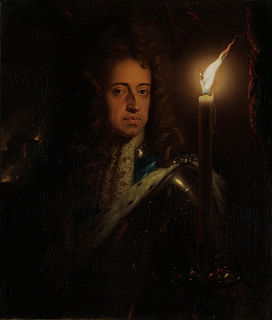
The Grand Alliance is the anti-French coalition formed on 20 December 1689 between England, the Dutch Republic and the Archduchy of Austria. It was signed by the two leading opponents of France; William III, King of England and Stadtholder of the Dutch Republic, and Emperor Leopold, on behalf of the Archduchy of Austria.
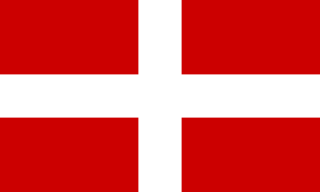
From 1416 to 1847, the Duchy of Savoy was a country in Western Europe. It was created when Sigismund, King of the Romans, raised the County of Savoy into a duchy for Amadeus VIII. The duchy was an Imperial fief, subject of the Holy Roman Empire with a vote in the Imperial Diet. From the 16th century, Savoy belonged to the Upper Rhenish Circle. Throughout its history, it was ruled by the House of Savoy and formed a part of the larger Savoyard state, which in 1720 became the Kingdom of Sardinia.

Marie Adélaïde of Savoy was the wife of Louis, Dauphin of France, Duke of Burgundy. She was the eldest daughter of Victor Amadeus II, Duke of Savoy, and of Anne Marie d'Orléans. Her betrothal to the Duke of Burgundy in June 1696 was part of the Treaty of Turin, signed on 29 August 1696. She was the mother of the future King Louis XV of France. Styled as Duchess of Burgundy after her marriage, she became Dauphine of France upon the death of her father-in-law, Le Grand Dauphin, in 1711. She died of measles in 1712, followed by her husband a week later.
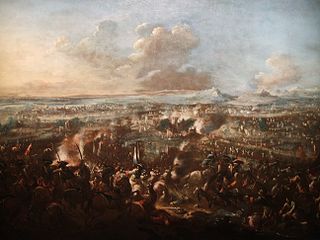
The siege of Turin took place from June to September 1706, during the War of the Spanish Succession, when a French army led by Louis de la Feuillade besieged the Savoyard capital of Turin. The campaign by Prince Eugene of Savoy that led to its relief has been called the most brilliant of the war in Italy. The siege is also famous for the death of Piedmontese hero Pietro Micca.

The Siege of Toulon took place between 29 July to 21 August 1707 during the War of the Spanish Succession, when a combined Savoyard-Imperial army supported by a British naval force, attacked the French base at Toulon.

The Battle of Staffarda, 18 August 1690, was fought during Nine Years' War in Piedmont-Savoy, modern-day northern Italy. The engagement was the first major encounter in the Italian theatre since Victor Amadeus, the Duke of Savoy, had joined the Grand Alliance in opposition to France earlier that year. The battle was a clear victory for the French commander, Nicolas Catinat, who proceeded to take other Piedmontese strongholds. The French also overran most of the Duchy of Savoy, but due to sickness, lack of infantry, and problems with supply, Catinat was unable to besiege Amadeus's capital Turin as King Louis XIV had hoped.
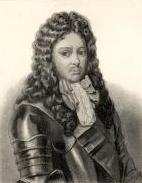
Louis d'Aubusson de la Feuillade, duc de Roannais was a French military officer and courtier who fought in the Nine Years War and the War of the Spanish Succession.

The Battle of Cassano took place on 16 August 1705, during the War of the Spanish Succession. It was fought at the town of Cassano d'Adda, in Lombardy, Italy, between a French army commanded by the duc de Vendôme and an Imperial army under Prince Eugene of Savoy.

The Siege of Cuneo was fought on 28 June 1691 during Nine Years' War in Piedmont-Savoy, modern-day northern Italy. The siege was part of French King Louis XIV’s campaign against Victor Amadeus, the Duke of Savoy, who had sided with the Grand Alliance the previous year. The siege was an attempt to gain a foothold on the Piedmont Plain, thus ensuring Marshal Catinat's army could winter east of the Alps. Yet due to the incompetence of the two French commanders – and a timely arrival of Imperial reinforcements – the siege proved a disaster, resulting in the loss of between 700 and 800 men. Although French forces had taken Nice in the west, and Montmélian in the north, Catinat's small, ill-equipped army was forced onto the defensive. Louis XIV subsequently offered Amadeus generous peace terms but the Duke, who had by now received substantial Imperial reinforcements from the Empire, considered himself strong enough to continue hostilities.
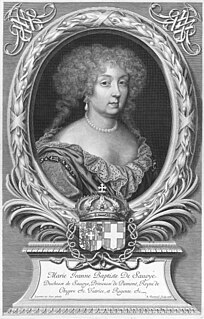
Marie Jeanne Baptiste of Savoy-Nemours was born a Princess of Savoy and became the Duchess of Savoy by marriage. First married by proxy to Charles of Lorraine in 1662, Lorraine soon refused to recognise the union and it was annulled. She married Charles Emmanuel II, Duke of Savoy in 1665 who was her kinsman. The mother of the future Victor Amadeus II of Sardinia who saw the elevation of the House of Savoy to kings, she styled herself as Madama Reale or Madame Royale. She acted as Regent of Savoy from 1675 in the name of her son Victor Amadeus II, who was her husband's successor. Her regency officially ended in 1680, but she maintained power until her son banished her from further influence in the state in 1684. She left a considerable architectural legacy in Turin, and was responsible for the remodelling of the Palazzo Madama, which was her private residence. At the time of her death she was the mother of the King of Sardinia as well as great grandmother of two other kings, Louis I of Spain and Louis XV of France.

The Piedmontese Civil War, also known as the Savoyard Civil War, was a conflict for control of the Duchy of Savoy from 1639 to 1642. Although not formally part of the 1635 to 1659 Franco-Spanish War, Savoy's strategic importance drew in both Habsburg Spain and the Kingdom of France.

Victor Amadeus of Savoy was the eldest son of Victor Amadeus II, Duke of Savoy and his French wife Anne Marie d'Orléans. He was the heir apparent of Savoy from his birth and as such was styled as the Prince of Piedmont. He acted as Regent of Savoy from September 1713 till September 1714 in the absences of his father. He died of smallpox at the age of 15.

The Kingdom of Sicily was ruled by the House of Savoy from 1713 until 1720, although they lost control of it in 1718 and did not relinquish their title to it until 1723. The only king of Sicily from the House of Savoy was Victor Amadeus II. Throughout this period Sicily remained a distinct realm in personal union with the other Savoyard states, but ultimately it secured for the House of Savoy a royal title and a future of expansion in Italy rather than in France. During this period, the Savoyard monarch used his new title to affirm his sovereign independence.
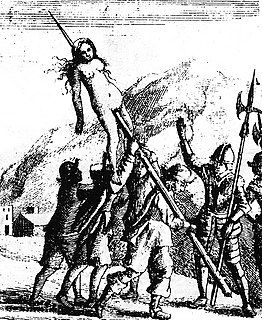
The Savoyard–Waldensian Wars were a series of conflicts between the community of Waldensians and the Savoyard troops in the Duchy of Savoy from 1655 to 1690. The Piedmontese Easter in 1655 sparked the conflict. It was largely a period of persecution of the Waldensian Church, rather than a military conflict. Joshua Janavel (1617–1690) was one of the Waldensian military leaders against the Savoyard ducal troops.
























